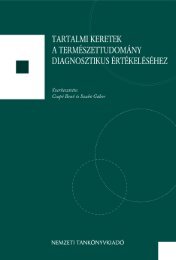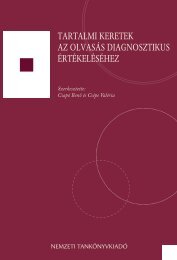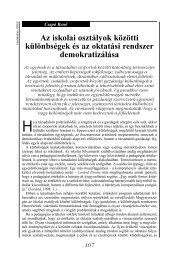értekezés - Neveléstudományi Intézet - Szegedi Tudományegyetem
értekezés - Neveléstudományi Intézet - Szegedi Tudományegyetem
értekezés - Neveléstudományi Intézet - Szegedi Tudományegyetem
Create successful ePaper yourself
Turn your PDF publications into a flip-book with our unique Google optimized e-Paper software.
Gembris, H. (2002): The development of musical ability. In: Colwell, R. és Richardson, C.<br />
(szerk.): The New Handbook of Research on Music Teaching and Learning. Oxford University<br />
Press, New York. 487–509.<br />
Geoghegan, N. és Mitchelmore, M. (1996): Possible effect of early childhood music on<br />
mathematical achievement. Journal for Australian Research in Early Childhood, 1. 55–<br />
64.<br />
Gerard, C. és Drake, C. (1990): The inability of young children to reproduce intensity<br />
differences musical rhythms. Perception and Psychophysics. 48. 91–101.<br />
Gick, M. L. és Holyoak, K. J. (1983): Schema induction and analogical transfer. Cognitive<br />
Psychology. 1. 1–38.<br />
Goetze, M., Cooper, N. és Brown, C. J. (1990): Recent research on singing in the general<br />
classroom. Bulletin of the Council for Research in Music Education, 104. 16–37.<br />
Goolsby, T. (1994): Profiles of processing: Eye movements during sightreading. Music<br />
Perceptions, 12. 97–123.<br />
Gordon, E. E. (1965): Musical Aptitude Profile Manual. Houghton Mifflin, Boston.<br />
Gordon, E. E. (1971): The Psychology of Music Teaching. Prentice-Hall, Englewood Cliffs.<br />
Gordon, E. E. (1988): Musical Aptitude Profil. 2nd Edition, Riverside Publishing, Co., Chicago.<br />
Gordon, E. E. (1989a): Elementary School Test. GIA Publications, Chicago.<br />
Gordon, E. E. (1989b): Advanced Measures of Music Audiation. GIA Publications, Chicago.<br />
Grandin, T., Peterson, M. és Shaw, G. L. (1998): Spatial-temporal versus langauge-analytic<br />
reasoning: the role of music training. Arts Education Policy Review, 99. 6. sz. 11–18.<br />
Gromko, J. E. (2005): The effect of music instruction on phonemic awareness in bigining<br />
readers. Journal of Research in Music Education, 53. 3. sz. 199–209.<br />
Gósy Mária (1989): Beszédészlelés. MTA Nyelvtudományi <strong>Intézet</strong>e, Budapest.<br />
Gósy Mária (2002): A beszédészlelés és a beszédmegértés folyamatának zavarai. In: Martonné<br />
Tamás Márta (szerk.): Fejlesztı pedagógia. ELTE Eötvös Kiadó, Budapest. 117–139.<br />
Gósy Mária (2006): GMP – diagnosztika. A beszédészlelés és beszédmegértés folyamatának<br />
vizsgálata, fejlesztési javaslatok. Nikol KKT, Budapest.<br />
Gönczy László (1992): Kodály zenepedagógiai öröksége a ’90-es években. Muzsika, 35. 3. sz.<br />
6–9.<br />
Gönczy László (1993): Szembenézni a tényekkel. Muzsika, 36 3. sz. 47–48.<br />
Gönczy László (2008): Kodály országa – az eltékozolt lehetıségek országa. Parlando, 50. 2.<br />
sz. 28–31.<br />
Gönczy László (2009): Kodály-koncepció: a megértés és alkalmazás nehézségei Magyarországon.<br />
Magyar Pedagógia, 109. 2. sz. 169–185.<br />
Gurian, M. és Stevens, K. (2004): With boys and girls in mind. Educational Leadership, 62.<br />
3. sz. 21–26.<br />
Gyarmathy Éva (2002): A zenei tehetség. Új Pedagógiai Szemle, 52. 7–8. sz. 136–244.<br />
Häcker, W., és Ziehen, T. (1922): Über die Erblichkeit der musikalischen Begabung.<br />
Zeitschrift für Psychologie, 90. 230–231.<br />
Haley, J. (2001): The relationship between instrumental music instruction and academic<br />
achievement in fourth grade students. Doctoral Dissertation, Pace University, Dissertation<br />
Abstracts International, 62. (09), 2969A.<br />
Halmos, P. (1968): Mathematics as a creative art. American Scientist, 56. 375–389.<br />
286



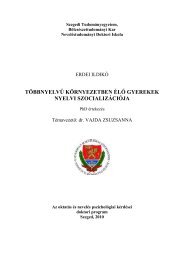

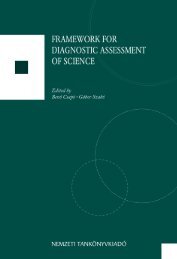
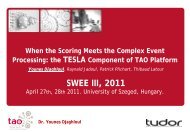
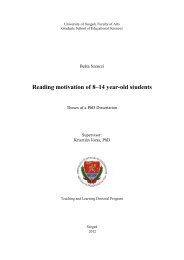

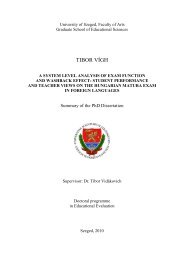
![Download [PDF] - Diagnosztikus Mérések Fejlesztése](https://img.yumpu.com/38928685/1/177x260/download-pdf-diagnosztikus-macracsek-fejlesztacse.jpg?quality=85)
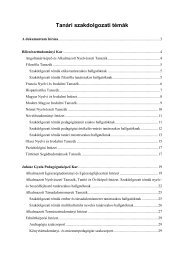

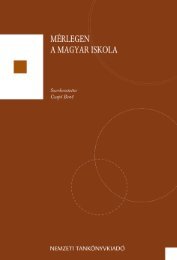
![Download [PDF] - Diagnosztikus Mérések Fejlesztése](https://img.yumpu.com/38928622/1/180x260/download-pdf-diagnosztikus-macracsek-fejlesztacse.jpg?quality=85)
